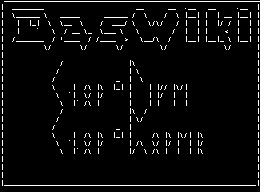- Das Wiki
- zsh.md
- zoneminder.md
- yubikey.md
- yasnippet.md
- xprofile.md
- xmonad.md
- wpa_supplicant.md
- wp3.md
- windows.md
Menu (Edit):
Link List (Edit):
# ____ _ __ __ _ _
# | _ \ ___ __| |_ __ ___ __ _ _ __ | \/ | __ _ ___| |__ (_)_ __ ___
# | |_) / _ \ / _` | '_ ` _ \ / _` | '_ \ | |\/| |/ _` |/ __| '_ \| | '_ \ / _ \
# | __/ (_) | (_| | | | | | | (_| | | | | | | | | (_| | (__| | | | | | | | __/
# |_| \___/ \__,_|_| |_| |_|\__,_|_| |_| |_| |_|\__,_|\___|_| |_|_|_| |_|\___|
Podman Containers vs. Podman Machine
[!attention] Podman Machine is not intended for Linux! Podman Machine is primarily intended for machines like windows to create an initial virtual environment suitable for podman to run in. It is not intended for use in linux.
Primarily podman is intended to be used to manage virtual containers, and this is what it does best. It is important to distinguish the difference between podman containers and podman machine. Podman relies on podman machine to run containers for operating systems that do not provide a native virtual abstraction layer. So, in effect, the two are two different layers of the same system that implement separate functionality of the virtual environment ecosystem. On Linux, Podman Machine is not implemented by default, and is not required for use of the podman ecosystem.
Podman Machine
Podman Machine is the interface to the podman virtual machine layer, which is the fully virtualized environment podman uses to manage and run virtual containers on. For linux systems this feature is not required and is not implemented by default, and it’s primary application is intended for use with MacOS and Windows systems which do not provide virtual abstraction layer. Linux systems can access and use the podman virtual machine layer to perform other tasks. The benefit one recieves from using podman in this manner is access to peripheral devices that are not normally accessible to docker images. The default image used for doing this is fedora-core, but podman can be configured to use other OCI images.
Podman Machine Init
To use this feature, simply initialize a new podman machine with:
podman machine init
Do not use sudo for this, as podman machines are not intended to be run as root ever.
Podman Machine Post Init
In order for podman machine to run, the user will need to perform a few extra steps.
- Run
ls /usr/libexec/podmanand take note of the binary executables listed. There should be three symbolic links to binary executables; catatonit, conmon, and gvproxy. There should also be two binary files; quadlet and rootlessport. - If you see these five files, you can move on. If you don’t see these five files, you have a few more quick steps to perform.
- For each missing file, you need to check and see if you already have it installed on your system. This can
usually be performed using
which $MISSING_FILE_GOES_HERE, for examplewhich gvproxy. This command will check if the file is in your path, and it should be. If this does not work and you have mlocate installed, you could runsudo updatedb && locate $MISSING_FILE_GOES_HERE. - If you are unable to locate the file, then install it from your package manager and proceed to the next
step.
sudo apt install $MISSING_FILE_GOES_HERE - Afterward, you should then create a symbolic link from where the file is installed into
/usr/libexec/podman. This can be done quickly withsudo ln -sf $(which $MISSING_FILE_GOES_HERE) /usr/libexec/podman/$MISSING_FILE_GOES_HERE. - Once this is done, and you have all the files inside the podman dir. You should be good to go.
Podman Machine Set
If you would like to add a USB device along with this new image you can use:
podman machine set --usb vendor=XXX,product=XXX
# OR
podman machine set --usb bus=XXX,devnum=XXX
Using bus and id are also accepted for these values, although they will change if the device is moved to a different usb port or another usb is removed.
If you need your podman machine to have root permissions, you can run: podman machine set --rootful.
 Anoduck's Das Wiki
Anoduck's Das Wiki